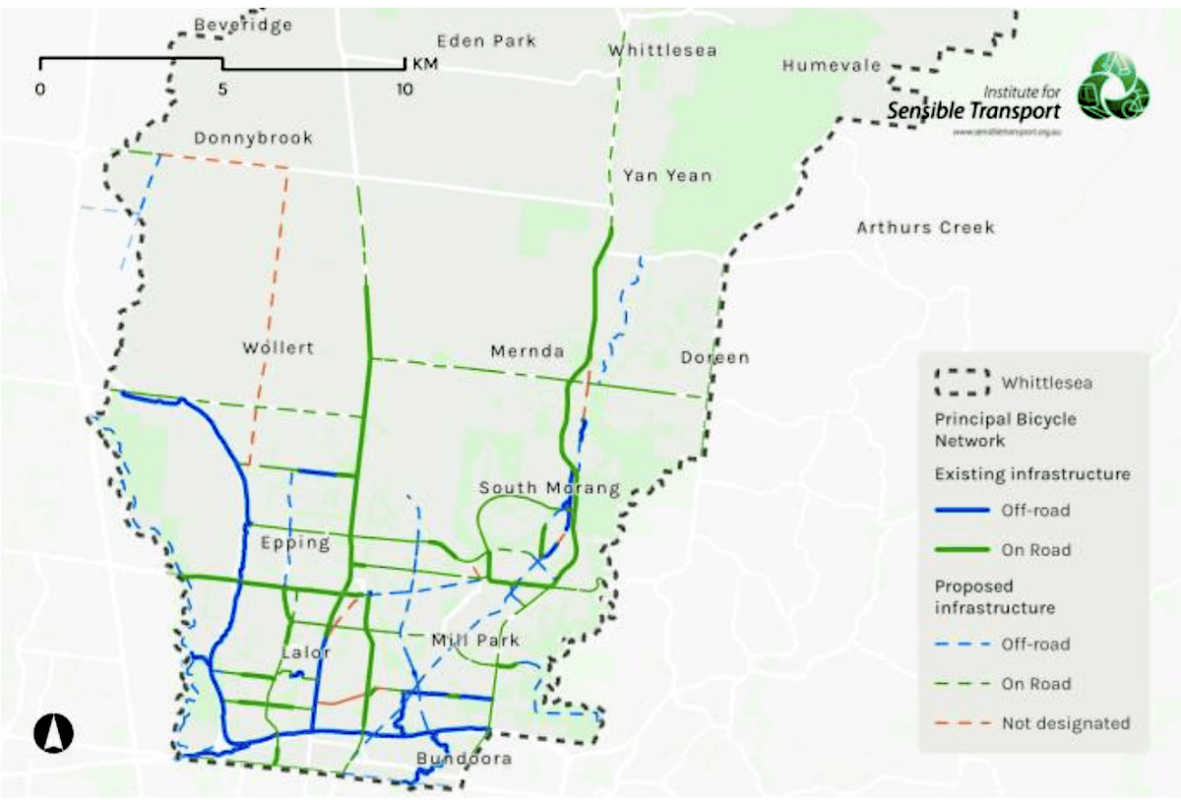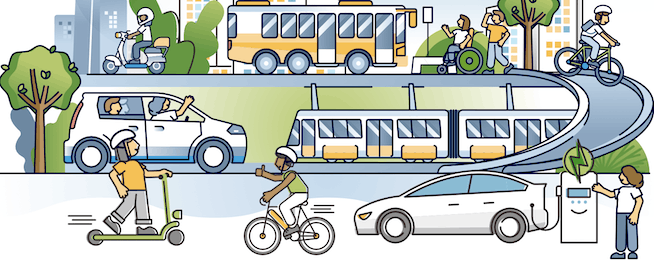Rapidly growing suburbs in Melbourne’s far north are already being squeezed by traffic congestion even though the region is only partially developed and the many new settlements are sparsely spotted amid hectares of empty land.
In developing its new Integrated Transport Plan (ITP) the City of Whittlesea has concluded that by continuing to grow as it has been, with a car-dominant transport system, there will be trouble ahead.
Continuing a business-as-usual approach will exacerbate the current challenges of climate change, traffic congestion, social isolation, poor health outcomes and economic disadvantage, the new draft ITS says.
"The ITP will focus on a future scenario of sustainable change, which would involve concentrating new housing development in existing areas around public transport.
"Development within the growth areas will be focused on more compact and liveable neighbourhoods.
"Larger increases in active travel and an expansion of the public transport network will result from greater population density in areas well serviced by public transport and active transport infrastructure.”
The draft ITP, out for a final consultation phase now, aims to "support a transport system in the City of Whittlesea which offers the community a greater range of viable, attractive and alternative transport choices, so that road infrastructure is most efficiently used by those that have the greatest need to drive.”
https://engage.whittlesea.vic.gov.au/itp
You can download the draft plan and respond in a survey. There are also community pop-ups in Epping, Thomastown, Merida and Doreen next week.

Among the initiatives in the plan are improving and expanding the network of walking and cycling paths in the municipality, to better connect people to their local facilities, and, delivering behaviour change programs and initiatives aimed at encouraging new residents to consider alternative transport choices and kids to walk to school.
"Many car trips in the City of Whittlesea are under 5km and could more effectively be undertaken by walking and cycling,” the plan states.
"The potential for trip transfer away from the private car can assist with reducing congestion and parking pressures, particularly around town centres and activity centres.
"Walking and cycling are popular forms of recreational activity within the municipality and the resulting physical activity has flow-on impacts on health and wellbeing.
"Furthermore, walking and cycling do not produce carbon emissions and lessen the impact of global warming on future generations.
"Encouraging new residents to consider walking and cycling will be dependent on access to a connected and safe active transport network with services and facilities available within an acceptable catchment.
"Council will continue to work with developers to deliver best practice walking and cycling infrastructure in new estates such as separated bicycle paths and raised crossing points on priority networks."
Or become our friend and subscribe to receive our fortnightly newsletter.


